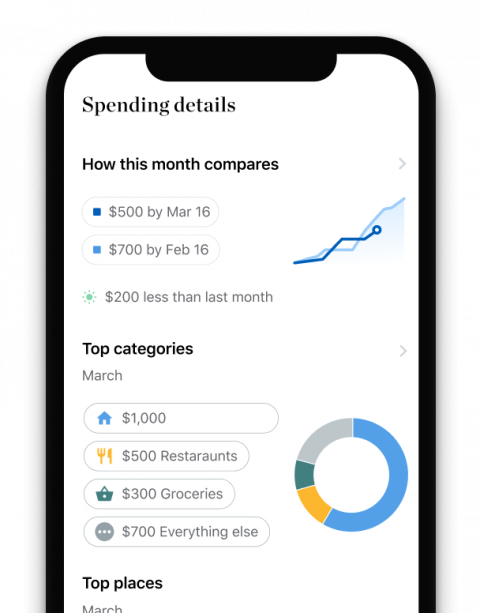
Student loan forbearance can temporarily stop or lower your payments, but it always increases the amount you owe.

Ryan Lane
Assigning Editor | Small business, student loans
Ryan Lane is an editor on NerdWallet’s small-business team. He joined NerdWallet in 2019 as a student loans writer, serving as an authority on that topic after spending more than a decade at student loan guarantor American Student Assistance. In that role, Ryan co-authored the Student Loan Ranger blog in partnership with U.S. News & World Report, as well as wrote and edited content about education financing and financial literacy for multiple online properties, e-courses and more. Ryan also previously oversaw the production of life science journals as a managing editor for publisher Cell Press. Ryan is located in Rochester, New York.
Lead Assigning Editor Des Toups
Lead Assigning Editor | Student loans, repaying college debt, paying for college
Des Toups was a lead assigning editor who supported the student loans and auto loans teams. He had decades of experience in personal finance journalism, exploring everything from car insurance to bankruptcy to couponing to side hustles.
Fact Checked Co-written by Anna Helhoski Senior Writer Anna Helhoski
Senior Writer | Economic news, consumer finance trends, student loan debt
Anna Helhoski is a senior writer covering economic news and trends in consumer finance at NerdWallet. She is also an authority on student loans. She joined NerdWallet in 2014. Her work has appeared in The Associated Press, The New York Times, The Washington Post and USA Today. She previously covered local news in the New York metro area for the Daily Voice and New York state politics for The Legislative Gazette. She holds a bachelor's degree in journalism from Purchase College, State University of New York.
Many, or all, of the products featured on this page are from our advertising partners who compensate us when you take certain actions on our website or click to take an action on their website. However, this does not influence our evaluations. Our opinions are our own. Here is a list of our partners and here's how we make money.
Student loan forbearance is a temporary way to lower or stop making payments. It's not a long-term affordability strategy or a method to delay repayment indefinitely.
Simplify your student loan refinancing with SparrowPre-qualify and compare rates with 17+ lenders to refinance your student loans through a single form in as little as three minutes.
Compare RatesAnd that means very few people should use it.
Think of forbearance as a last resort to avoid student loan default . Use it only if all the following are true:
You can’t pay your loans. You don’t expect to wait long to restart repayment. You won’t qualify for deferment, which is a better option for pausing repayment.If you’re worried about affording your federal student loans in the long run, opt for an income-driven repayment plan instead to keep your payment amount manageable.
Student loan forbearance is an option that lets you temporarily pause or reduce your monthly payments.
Federal student loan forbearance usually lasts 12 months at a time and has no maximum length. That means you can request forbearance as many times as you want, though servicers may limit how much you receive.
There are three overarching types of federal student loan forbearance: general, mandatory and administrative. Here’s when you would use each one.
If you’re having financial difficultiesYou’ll request a general forbearance. This allows your student loan servicer to grant you a postponement for any reason it deems fit, like:
You’re dealing with medical expenses. You’re between jobs and can’t afford your payments. You’re experiencing other financial difficulties.While there is a general forbearance application, you can ask for and receive this type of forbearance over the phone. Granting a general forbearance is entirely up to your servicer’s discretion, so this is often called discretionary forbearance as well.
Servicers regularly approve general forbearance requests. Currently, this is the most common type of forbearance, with more than 1.5 million borrowers using this option.
If you’re applying for a specific federal program or benefitThe program’s application may indicate that you have the choice to place your loans in an administrative forbearance.
For example, if you’re applying for or recertifying an income-driven repayment plan , you can place your loans in an administrative forbearance while your paperwork is processed. This will prevent you from having to keep paying larger bills until your lower payments start.
If you meet the requirements for a mandatory forbearanceUnlike a general forbearance, your servicer must grant you a mandatory forbearance if you qualify for and request it. Qualifications for receiving mandatory forbearance vary and can include:
Participating in a medical or dental internship or residency. Having student loan payments that exceed 20% of your monthly gross income. Serving in AmeriCorps. Performing service that will qualify you for Teacher Loan Forgiveness. Serving in the National Guard, but not qualifying for military deferment.To receive a mandatory forbearance, you’ll have to provide your servicer with the appropriate form and any necessary documentation, such as proof of your monthly income.
Many private lenders offer student loan forbearance as well. This is usually for a total of 12 months, but there’s no standard or required amount. Look at your loan’s paperwork or contact your lender to learn about your forbearance options and the application process.
Student loan forbearance isn’t bad if the alternative is having your wages garnished or losing your tax refund because of a defaulted loan. But forbearance can be expensive.
When you put loans in any type of forbearance, interest continues to accrue on your balance. That interest is capitalized , or added to your balance, at the end of the forbearance. This increases the amount you end up repaying.
Because forbearance is often available to anyone with financial difficulties — and there’s no limit to how long you can get it for — these costs can really add up over time.
For example, after putting $30,000 in loans on hold for 12 months at 6% interest, $1,800 worth of interest would have accrued. Now, you’d owe $31,800, and future interest would accrue on that higher balance. Estimate how much a forbearance could cost you with this calculator.
Millions of borrowers are expected to benefit from one-time fixes that count past payments toward the 240 or 300 needed to qualify for income driven repayment forgiveness, the Department of Education announced on April 19. The changes also include an end to “forbearance steering,” a practice in which loan servicers are accused ( and were sometimes found guilty of ) steering borrowers into short-term, costly options like forbearance.
The department estimates 13% of all borrowers with direct student loans used forbearances between July 2009 and March 2020 for at least 36 months. Borrowers with forbearances of more than 12 consecutive months or 36 months total will see those months retroactively count toward income-driven repayment forgiveness; the change will be applied automatically later in 2022.
To end the practice, the department plans to engage in further oversight and review of forbearance use and servicers’ practices, including restricting servicers’ ability to enroll borrowers in forbearance through text or email.
Student loan forbearance is a quick fix, but its costs make it a less-than-ideal repayment option. Choose forbearance only for short, one-off financial crises, like when you need money for a big auto repair or medical bill.
If forbearance makes sense for you, opt to reduce your payments — instead of stopping them altogether — or to at least pay the interest that accrues before it capitalizes. This will help prevent a tough financial situation from getting worse.
Other repayment optionsBefore opting for forbearance, consider these alternatives:
If you temporarily can’t afford any payment. Student loan deferment is another way to pause federal student loan payments, and it’s a better option than forbearance because you won’t have to pay interest on any subsidized student loans you have. You’ll qualify for deferment in certain circumstances — when you’re unemployed , for instance — so ask your student loan servicer if that’s an option before going with forbearance.
If you expect long-term financial challenges. Income-driven repayment plans tie payments to a percentage of your earnings; you can pay as little as $0. Because of their longer repayment terms, you’ll likely pay more interest on an income-driven plan. But any remaining balance on your loans will be forgiven after 20 or 25 years of payments, depending on the plan. Sign up for free at studentloans.gov .
If you have private student loans. The difference between deferment and forbearance isn’t substantial for private student loans, as both accrue interest you’ll be responsible for paying. If you can’t afford private loan payments, lenders may also offer other forms of relief, like letting you make interest-only or interest-free payments for a limited period of time.
About the authorsYou’re following Ryan Lane
Visit your My NerdWallet Settings page to see all the writers you're following.
Ryan Lane is an assigning editor for NerdWallet whose work has been featured by The Associated Press, U.S. News & World Report and USA Today. See full bio.
You’re following Anna Helhoski
Visit your My NerdWallet Settings page to see all the writers you're following.
Anna Helhoski is a senior writer covering economic news and trends. Her work has appeared in The Associated Press, The New York Times, The Washington Post and USA Today. See full bio.
On a similar note.

Download the app
Disclaimer: NerdWallet strives to keep its information accurate and up to date. This information may be different than what you see when you visit a financial institution, service provider or specific product's site. All financial products, shopping products and services are presented without warranty. When evaluating offers, please review the financial institution's Terms and Conditions. Pre-qualified offers are not binding. If you find discrepancies with your credit score or information from your credit report, please contact TransUnion® directly.
NerdUp by NerdWallet credit card: NerdWallet is not a bank. Bank services provided by Evolve Bank & Trust, member FDIC. The NerdUp by NerdWallet Credit Card is issued by Evolve Bank & Trust pursuant to a license from MasterCard International Inc.
Impact on your credit may vary, as credit scores are independently determined by credit bureaus based on a number of factors including the financial decisions you make with other financial services organizations.
NerdWallet Compare, Inc. NMLS ID# 1617539
California: California Finance Lender loans arranged pursuant to Department of Financial Protection and Innovation Finance Lenders License #60DBO-74812
Insurance Services offered through NerdWallet Insurance Services, Inc. (CA resident license no.OK92033) Insurance Licenses
NerdWallet™ | 55 Hawthorne St. - 10th Floor, San Francisco, CA 94105